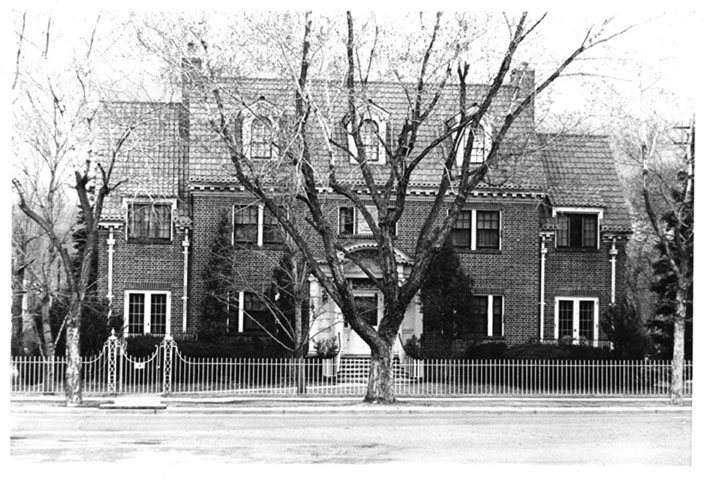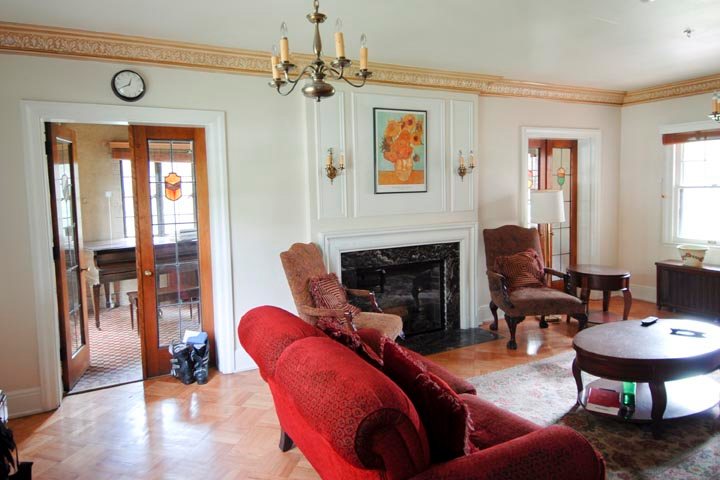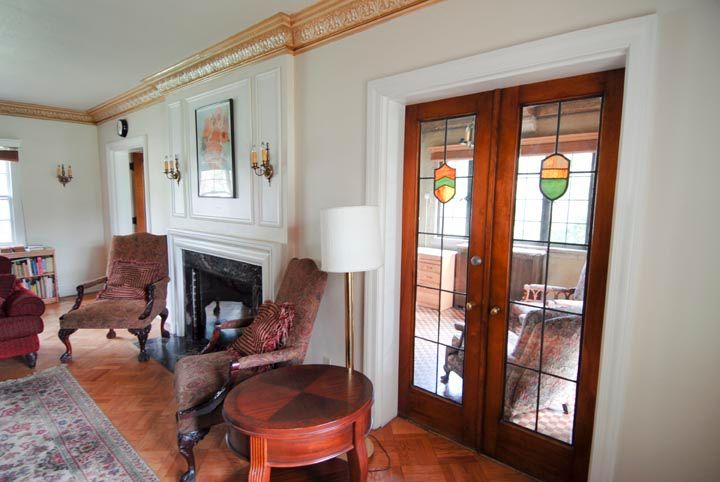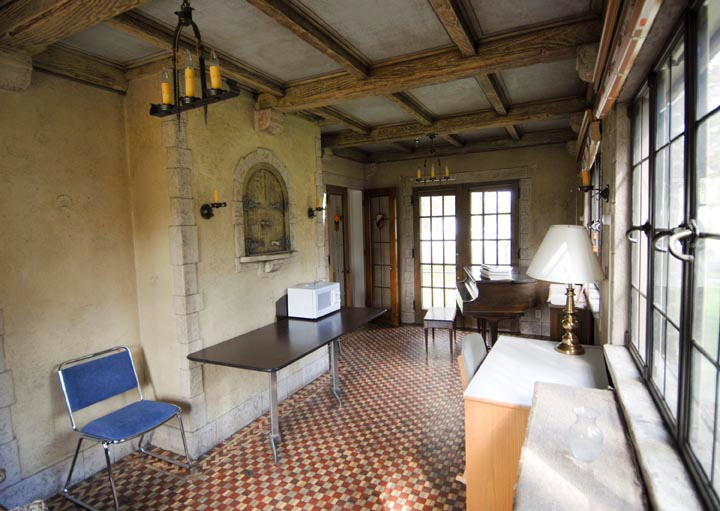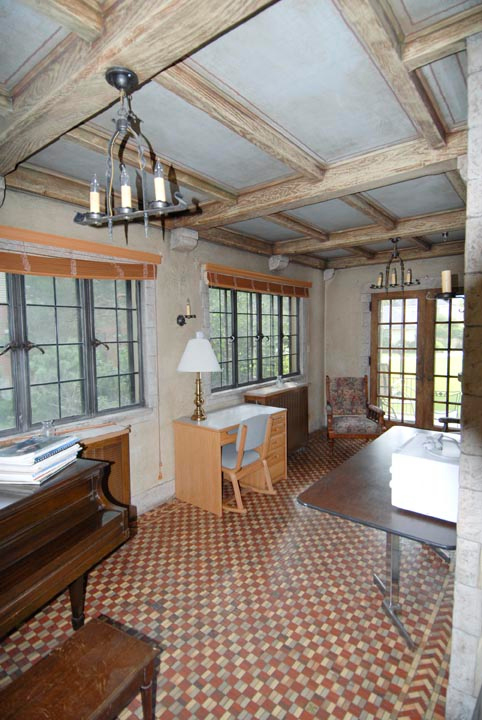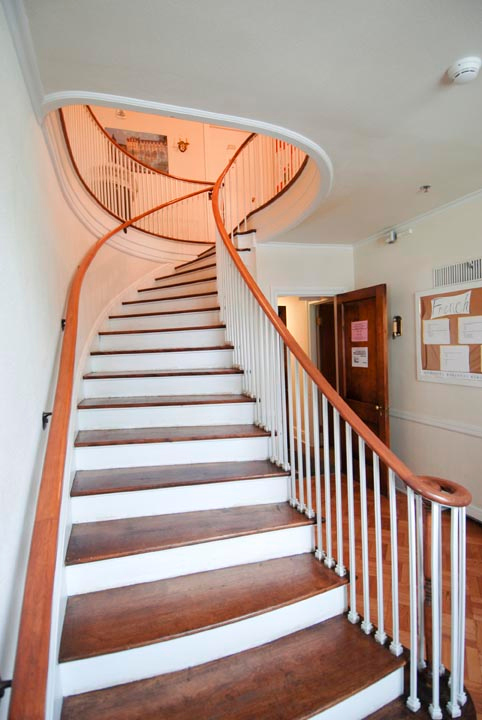Haskell House
Tour Stop: #7
Current Name: Haskell House
Historic Name: Rice House
Address: 1196 N. Cascade Avenue
Year Completed: 1927
Architectural Style: Colonial Revival
Architect: Thomas P. Barber, Colorado Springs
Designation: National Register
Access: Haskell House is a residence and therefore is not open to the public.
Ida May Maclaskey Rice, the widow of a prominent Colorado Springs physician, constructed this house in 1927. Born in Illinois in 1861, she married fellow Richfield native David Rice in 1883. Doctor Rice, born in 1855, completed his medical studies at Missouri Medical College in 1888, and the couple moved to Cheney, Kansas, where he established a practice and their only daughter, Ethel, was born. Following the family's move to Colorado Springs in 1892, David Rice became the personal physician of mining millionaire and philanthropist, Winfield Scott Stratton. The Stratton connection proved invaluable to Rice, who developed financial interests in mining, transportation, and banking. David Rice served as president of the Colorado Springs and Interurban Railway, president of the Stratton-Cripple Creek Mining and Development Company, director of the Exchange National Bank, and vice president of the Portland Gold Mining Company.
When Stratton died in 1902, David Rice became one of the trustees of the vast Stratton estate, a role whose duties soon supplanted his medical practice. The Colorado Springs Gazette judged that Doctor Rice "led the forces that in the prolonged legal battle retained the Stratton holdings intact from the assaults of various interests to claim a share of the estate and break the will of Mr. Stratton." The Rice family lived at 528 North Tejon Street, where David Rice died in January 1923.
Four years after her husband's death, Ida M. Rice erected this dwelling at the southwest corner of North Cascade Avenue and West Uintah Street. Colorado Springs architect Thomas P. Barber designed the residence, which is his last documented work in the city. Barber practiced architecture in Colorado Springs (associated with other architects or in solo practice) from the late-1880s to about 1927, when he moved to southern California. In 1902 Barber's younger brother, William, joined him in a partnership (Thomas P. Barber and Brother) that prepared plans for buildings in the city and around the state. The firm specialized in church architecture, producing religious buildings in cities such as Denver, Montrose, Palisade, Trinidad, and Longmont. Colorado Springs designs included several buildings on the campus of the Colorado School for the Deaf and Blind, Hibbard & Company (1914), and the Acacia Park Bandstand (1914). The firm also planned several school buildings. In addition, Thomas Barber collaborated with other architects on notable public buildings, such as the National Register-listed Colorado Springs City Hall with Thomas MacLaren in 1904.
This Building in History:
In 1873 Haskell travelled west to Denver, Colorado for the sake of the health of his daughter Florence Edwards. She died later in the same year. In her memory, he proposed before the Congregational Association of Colorado to start the first college in the Rocky Mountain region, Colorado College. Haskell became the college's first financial officer and his brother-in-law, Jonathan Edwards, became the first instructor and executive officer.
Residing in this house with a housekeeper, Ida Rice lived here until her death in October 1937. A Gazette-Telegraph obituary described her as a "prominent and widely known Colorado Springs resident." Following Mrs. Rice's death, her daughter's family occupied the dwelling. Harry O. and Ethel (Rice) Puffer, and their son, Herbert, lived here until 1941. Harry Puffer was associated with the Puffer Mercantile Company, a wholesale grocery firm. In 1908, he joined the business started by his father, L.A. Puffer, and Milo Rowell at the beginning of the century. By 1940, Harry Puffer headed the enterprise, whose trade area extended from Castle Rock to Fountain and from Leadville to the Kansas line.
In March 1941, Edgar L. Study, a "well-known Kansas oilman" from Hutchinson, purchased the house, described as "a handsome two-story red brick structure." Study, who lived here with his wife, Laurel, continued his career as an oil operator and producer in Colorado Springs. Colorado College acquired the dwelling for $42,500 in early 1961 for use as a residence hall. The 14-room dwelling boasted two fireplaces, three-and-a-half baths, and a full basement. The interior featured a central hall with curved staircase, a living room with parquet floors and a large fireplace, and an elaborate Italian sunroom.
The college renamed the dwelling "Haskell House," apparently in honor of Reverend Thomas Nelson Haskell, who was instrumental in the founding of Colorado College. Haskell, born in western New York in 1826, moved with his parents to Ohio while he was still an infant. In Ohio he attended Miami University, as well as Andover and Union Theological seminaries in the East. Haskell served as pastor of Congregational churches in Washington, D.C., Boston, and Aurora, Illinois, and taught Rhetoric, Literature, Aesthetics, and Political Economy at the University of Wisconsin. In early 1873, the Haskell family moved to Denver, hoping that the climate would improve the health of oldest daughter, Florence. She died in October 1873, and later that month at the annual conference of Congregational churches of Colorado Territory Haskell proposed a Christian college be established in his daughter's memory.
Haskell led a committee that studied the feasibility of establishing such an institution at various locations around Colorado. In January 1874, Colorado Springs, which had offered land and matching funds, was selected as the site of "The Colorado College." The institution received its charter in February, and Haskell served as a member of its first board of trustees and the school's fundraising solicitor. His efforts to procure donations were not successful, but Haskell stayed on the board until 1878. Although plagued by poor health in later life, he was a prolific writer and an educational activist until his death in 1906.
The house is considered one of the finest examples of Colonial Revival design crafted in Colorado Springs. Although most Colonial Revival style dwellings erected in the city during the first two decades of the twentieth century were frame, this dwelling is composed of brick laid in an English bond pattern. The house now serves as a coeducational French language immersion residence. Haskell House was listed in the National Register in 2006 in recognition of its historical and architectural importance.



